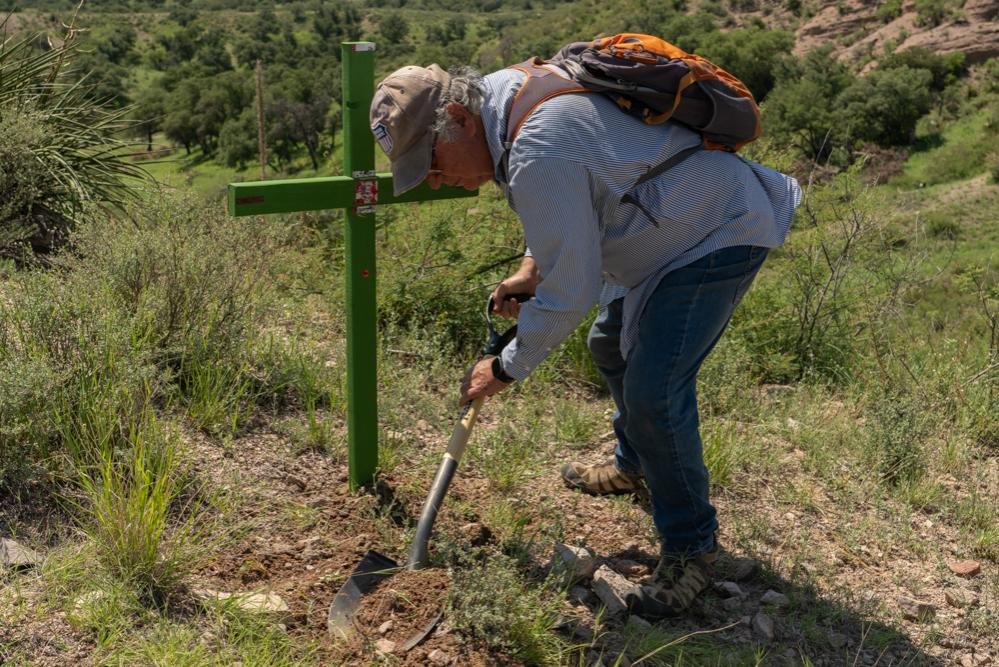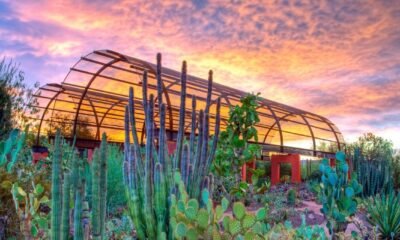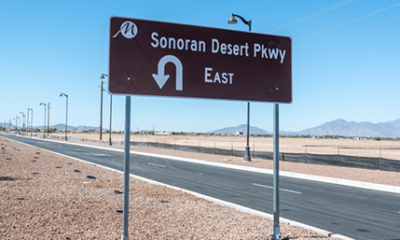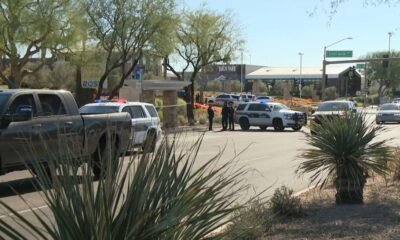border
Artist Commemorates Az Desert Deaths with Crosses, Rejects ‘St. Alvaro’ Title

For over a decade, 78-year-old Alvaro Enciso has been crafting crosses from wood and discarded materials collected from the Arizona desert, creating more than 1,700 unique memorials in his Tucson workshop.
Every Tuesday, he and a group of volunteers venture into remote areas of Southern Arizona to install these markers in honor of migrants who have succumbed to the treacherous conditions of the desert.
Each cross stands as a solitary tribute, often the only recognition many migrants receive for their lives cut tragically short.
A volunteer with the Tucson Samaritans shares GPS coordinates of sites where Isaías Choc Chen and Darwin García lost their lives, located in the isolated Sycamore Canyon. — Simon Feisthauer Fournet/TucsonSentinel.com
Volunteers from the Border Community Alliance place a cross for Cruz Ramos Chajal near a windmill in Sasabe, Arizona. — Simon Feisthauer Fournet/TucsonSentinel.com
On a recent Tuesday morning, Enciso painted a vivid orange cross that now marks the spot where Cruz Ramos Chajal, 40, lost his life in 2023 from heat exposure while attempting to cross from Mexico to the U.S., near a remote border town approximately 70 miles from Tucson.
Interns from the Border Community Alliance gathered to witness the ceremony, where Enciso emphasized the broader implications of each death. “That person had a destination in this country. There was another household. That person did not arrive,” he remarked, highlighting the network of people forever affected by such losses.
Peter Lucero, a volunteer, blesses the newly placed cross for Ramos Chajal. — Cris Seda Chabrier/TucsonSentinel.com
Enciso describes his work not as activism but as artistry, drawing from his own experiences with migration and belonging. He refers to his project as “Donde mueren los sueños” — Where Dreams Die, a poignant reflection on the migration experience.
Born in Colombia, he moved to New York City as a teenager during the tumultuous 1960s. Educated in cultural anthropology, Enciso recalls grappling with his sense of belonging, feeling adrift in both his home country and the United States.
In 2011, after relocating to Arizona, Enciso became acutely aware of the fatalities occurring in the Borderlands and began to experiment with artistic representations of migrant deaths. The concept of using crosses emerged after various trials, including humorously considering the use of a mule to transport markers through the desert.
Each cross symbolizes the stark reality of lives lost in pursuit of the American dream, a manifestation of both hope and despair. Enciso poignantly reflects on the historical use of the cross for oppression, contrasting it with the lives of migrants who traversed through perilous terrains.
Since heightened Border Patrol enforcement in 1994, over 4,000 human remains have been recovered along the Arizona-Mexico border, though the actual number of migrants who have perished remains uncertain due to the vast, desolate landscape.
Enciso critiques the approach taken by many humanitarian organizations, which he believes often fail to address the root causes of migration-related deaths, attributing this largely to political factors. He argues for greater involvement from the Hispanic community, emphasizing that the disconnect between aid efforts and migrant needs could further complicate the situation.
Despite frustrations, Enciso finds hope in the younger generation, who accompany him in the desert to engage with the narratives of those who have died. Intern Isabel Pan, a student from California, expressed the emotional weight of carrying the cross, equating it to bearing a coffin.
A group of volunteers stabilizes Darwin García’s cross, honoring his memory. — Cris Seda Chabrier/TucsonSentinel.com
For Enciso, the crosses serve as symbols of a broken promise to countless migrants and a reminder of the dreams that were never fulfilled.
Small crosses and art objects adorn Enciso’s home, each telling a story of migration and loss. — Cris Seda Chabrier/TucsonSentinel.com


















